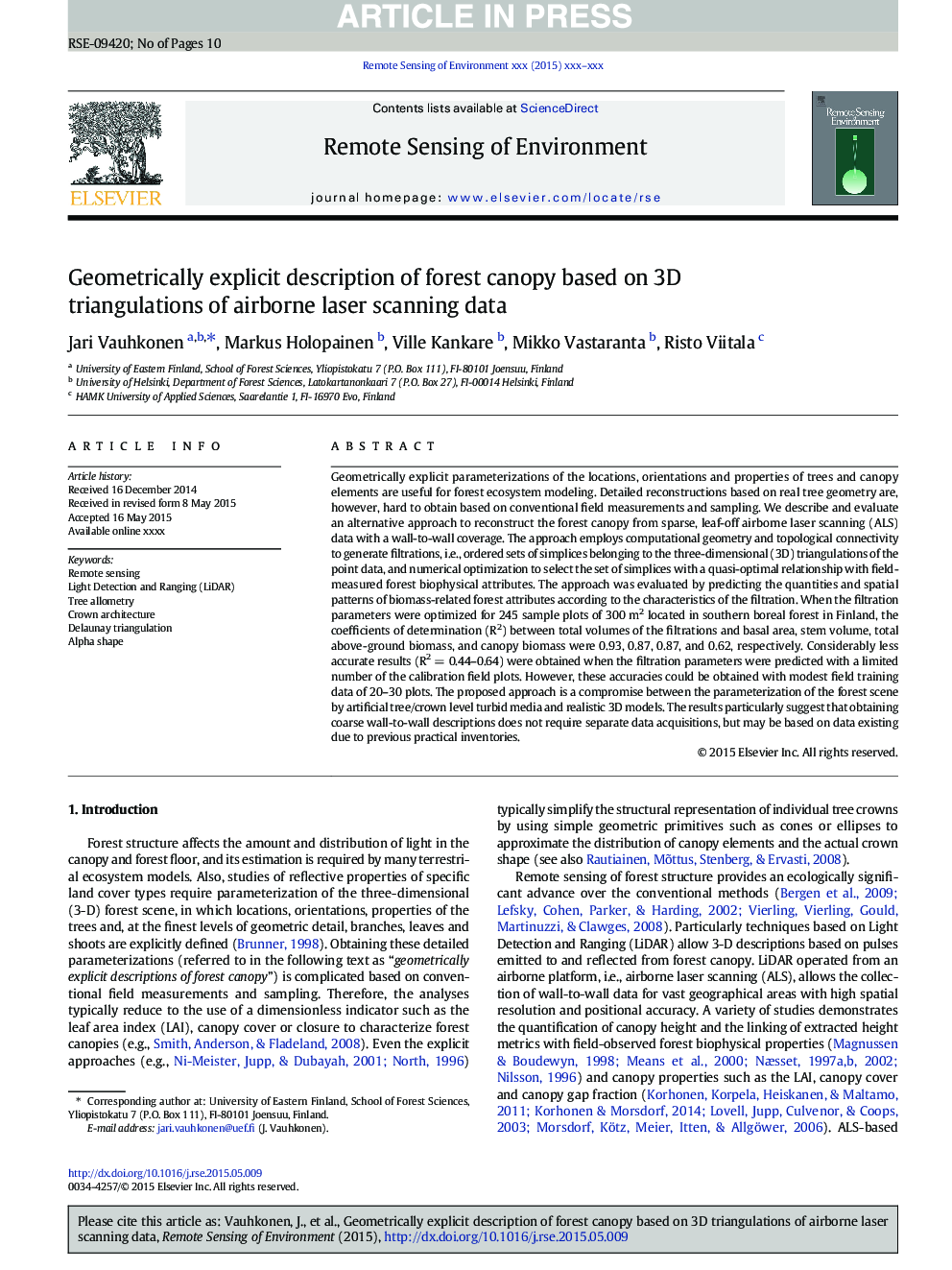| کد مقاله | کد نشریه | سال انتشار | مقاله انگلیسی | نسخه تمام متن |
|---|---|---|---|---|
| 6345684 | 1621227 | 2016 | 10 صفحه PDF | دانلود رایگان |
عنوان انگلیسی مقاله ISI
Geometrically explicit description of forest canopy based on 3D triangulations of airborne laser scanning data
ترجمه فارسی عنوان
توصیف هندسی توضیحی از سایبان جنگل بر اساس سه بعدی سه بعدی داده های اسکن لیزر هوا
دانلود مقاله + سفارش ترجمه
دانلود مقاله ISI انگلیسی
رایگان برای ایرانیان
کلمات کلیدی
موضوعات مرتبط
مهندسی و علوم پایه
علوم زمین و سیارات
کامپیوتر در علوم زمین
چکیده انگلیسی
Geometrically explicit parameterizations of the locations, orientations and properties of trees and canopy elements are useful for forest ecosystem modeling. Detailed reconstructions based on real tree geometry are, however, hard to obtain based on conventional field measurements and sampling. We describe and evaluate an alternative approach to reconstruct the forest canopy from sparse, leaf-off airborne laser scanning (ALS) data with a wall-to-wall coverage. The approach employs computational geometry and topological connectivity to generate filtrations, i.e., ordered sets of simplices belonging to the three-dimensional (3D) triangulations of the point data, and numerical optimization to select the set of simplices with a quasi-optimal relationship with field-measured forest biophysical attributes. The approach was evaluated by predicting the quantities and spatial patterns of biomass-related forest attributes according to the characteristics of the filtration. When the filtration parameters were optimized for 245 sample plots of 300Â m2 located in southern boreal forest in Finland, the coefficients of determination (R2) between total volumes of the filtrations and basal area, stem volume, total above-ground biomass, and canopy biomass were 0.93, 0.87, 0.87, and 0.62, respectively. Considerably less accurate results (R2Â =Â 0.44-0.64) were obtained when the filtration parameters were predicted with a limited number of the calibration field plots. However, these accuracies could be obtained with modest field training data of 20-30 plots. The proposed approach is a compromise between the parameterization of the forest scene by artificial tree/crown level turbid media and realistic 3D models. The results particularly suggest that obtaining coarse wall-to-wall descriptions does not require separate data acquisitions, but may be based on data existing due to previous practical inventories.
ناشر
Database: Elsevier - ScienceDirect (ساینس دایرکت)
Journal: Remote Sensing of Environment - Volume 173, February 2016, Pages 248-257
Journal: Remote Sensing of Environment - Volume 173, February 2016, Pages 248-257
نویسندگان
Jari Vauhkonen, Markus Holopainen, Ville Kankare, Mikko Vastaranta, Risto Viitala,
